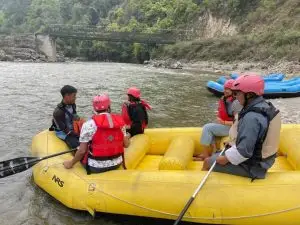Travel Guide
Introduction
Bhutan, known as the “Land of the Thunder Dragon,” is a hidden gem in the Eastern Himalayas. Famous for its breathtaking landscapes, rich cultural heritage, and unique Gross National Happiness philosophy, Bhutan offers an exceptional travel experience. This guide will help you explore its stunning valleys, ancient monasteries, vibrant festivals, and commitment to sustainable tourism. Whether you seek adventure, spirituality, or tranquility, Bhutan promises to captivate your heart and soul.
Getting There
Most travelers arrive in Bhutan through Paro International Airport, the country’s only international gateway. Druk Air and Bhutan Airlines operate flights from major cities, including Bangkok, Delhi, Kathmandu, and Singapore. Alternatively, you can enter overland from India through the border towns of Phuentsholing, Gelephu, and Samdrup Jongkhar.


Visa and Permits
All foreign nationals, except those from India, Bangladesh, and the Maldives, must obtain a visa to enter Bhutan. Visas should be arranged in advance through a licensed Bhutanese tour operator, and this process is generally managed as part of your travel package. Additionally, travelers are required to pay a daily tariff that covers accommodation, meals, transportation, and a licensed guide.
When to Visit
Bhutan experiences four distinct seasons, each offering unique experiences:
- Spring (March to May): This is an excellent time to visit, with blooming rhododendrons and enjoyable weather.
- Summer (June to August): The monsoon season brings lush landscapes but also heavy rain, which may affect travel plans.
- Autumn (September to November): Another peak season, autumn features clear skies, colorful festivals, and comfortable temperatures.
- Winter (December to February): Though cold, winter offers breathtaking views of snow-capped peaks and is a prime time for birdwatching. Read more
For those interested in understanding Bhutan’s unique development approach, the Gross National Happiness (GNH) Centre Bhutan offers comprehensive information about the country’s happiness index and its significance in shaping national policies. This philosophy prioritizes the well-being of its citizens over traditional economic metrics, making Bhutan a fascinating case study in holistic development.
If you’re planning to visit Bhutan, it’s essential to familiarize yourself with the country’s Tourism Council of Bhutan. This official resource provides valuable insights into Bhutan’s sustainable tourism model, visa guidelines, and travel regulations, ensuring that your visit aligns with local practices and contributes positively to the community.
For travelers looking to explore flight options, you can check schedules and book directly with Druk Air and Bhutan Airlines. Both airlines offer flights to and from major international destinations, making it easier for you to plan your journey to this enchanting kingdom.
Additionally, for a broader perspective on traveling in Bhutan, consider consulting the Lonely Planet Bhutan guide. This resource provides general travel tips, cultural information, and recommendations for must-see attractions, ensuring you make the most of your visit to this unique Himalayan destination.
Conclusion
A trip to Bhutan is a journey into a land of breathtaking natural beauty, rich cultural heritage, and a unique philosophy of happiness and development. Whether you seek adventure, spiritual growth, or a peaceful retreat, Bhutan promises an unforgettable travel experience.







